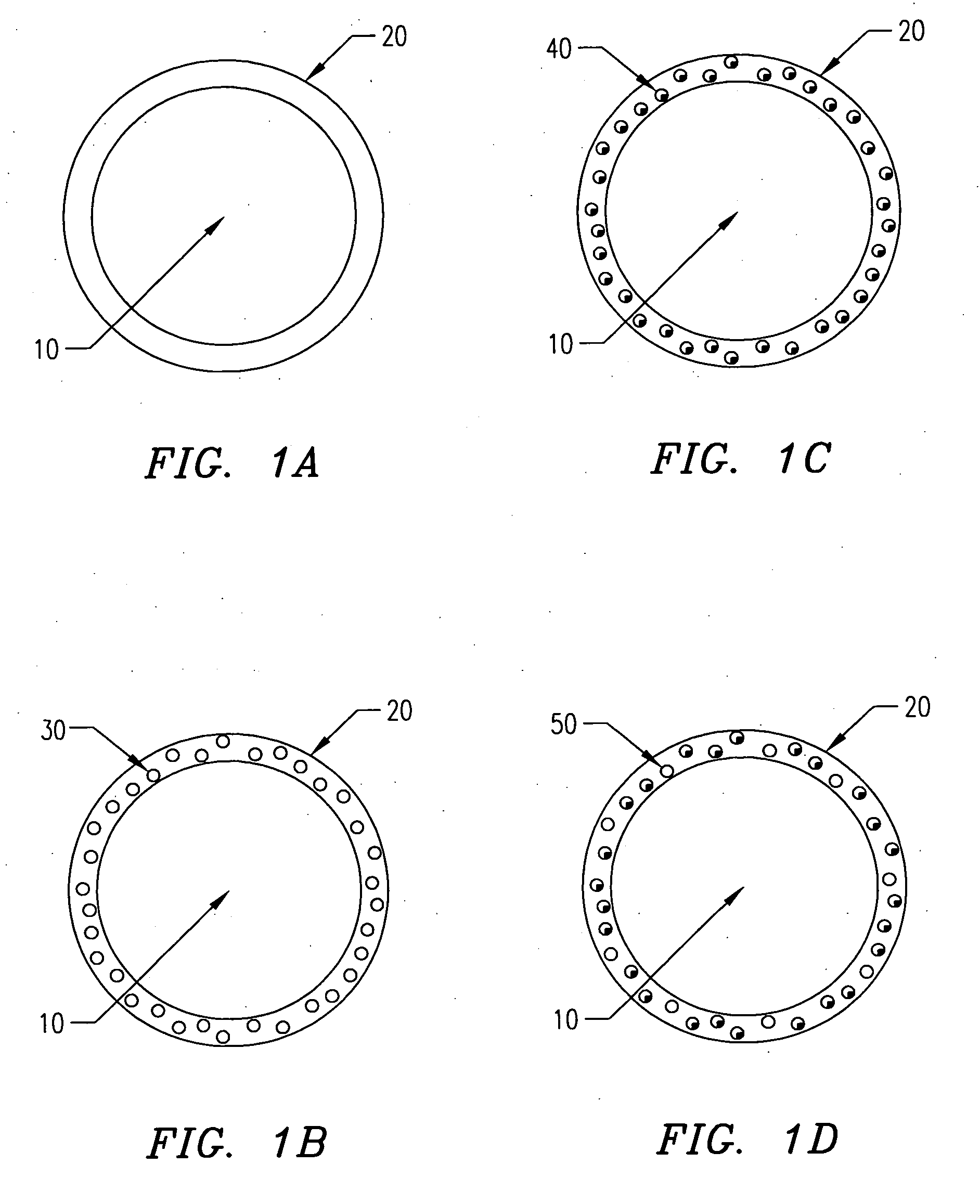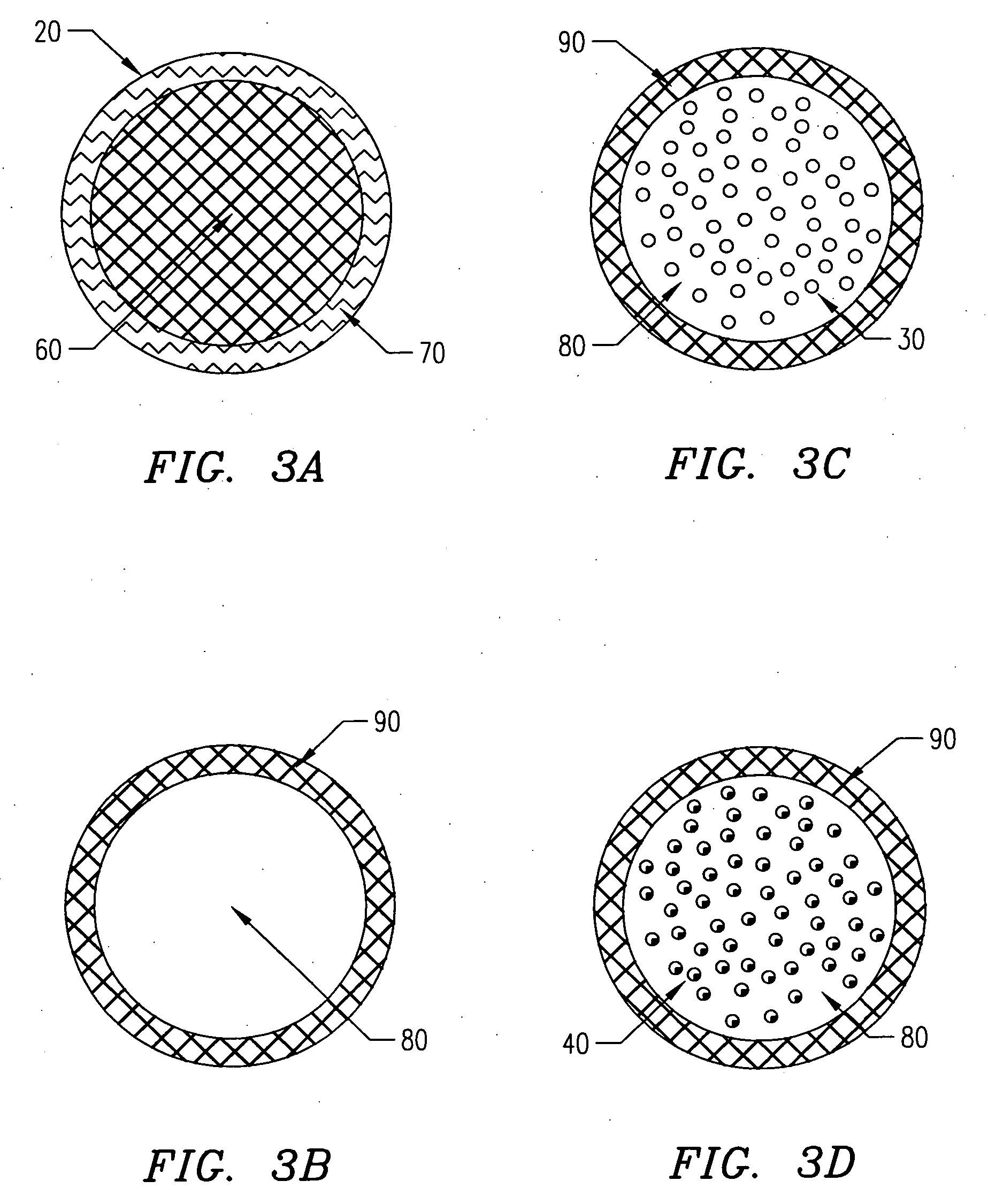Drug releasing biodegradable fiber for delivery of therapeutics
a biodegradable fiber and drug technology, applied in the field of medicine and tissue engineering, can solve the problems of large scaffolds that cannot be used, small scaffolds, and no way to ensur
- Summary
- Abstract
- Description
- Claims
- Application Information
AI Technical Summary
Benefits of technology
Problems solved by technology
Method used
Image
Examples
working examples
[0138] The following examples are included to demonstrate preferred embodiments of the invention and are not intended to limit the scope of the invention in any way. It should be appreciated by those of skill in the art that the techniques disclosed in the examples which follow represent techniques discovered by the inventor to function well in the practice of the invention, and thus can be considered to constitute preferred modes for its practice. However, those of skill in the art should, in light of the present disclosure, appreciate that many changes can be made in the specific embodiments which are disclosed and still obtain a like or similar result without departing from the spirit and scope of the invention.
example 1
3.2. Extrusion of Gel or Hydrogel Bored Fibers
[0139] In one embodiment of the present invention, the following procedure is used to create gel or hydrogel bored drug-releasing fibers. The apparatus used is depicted in FIG. 7, which details a fiber spinneret in which a coagulant bore fluid is fed through a small diameter hypodermic tube, which is centered in a blunt-end hypodermic needle. However, any similar configuration including scaled-up versions and specifically built apparatus' are included within the scope of the invention. This configuration allows for an annulus of polymer to flow through the spinneret, bored by a water-based gel or hydrogel. First, a biodegradable polymer such as poly(L-lactic acid) (PLLA), poly(DL-lactic acid), polycaprolactone, poly(glycolic acid), polyanhydride, or copolymers or blends of these or other biodegradable polymers is dissolved in some appropriate solvent (A) at concentrations ranging from 5 to 30 wt % depending on the type of polymer, 10 wt...
example 2
3.3. Extrusion of Gel Coated Polymer Fiber
[0142] In another embodiment of the present invention, a PLLA or other biodegradable polymer fiber coated with a hydrogel is created. The extrusion process is similar to that described, except the coagulant bath used contains a coagulant or crosslinker for the hydrogel. The polymer and hydrogel are extruded through a spinneret similar to that previously described, with the polymer solution (possibly containing a drug in a dispersed aqueous or gel phase) extruded through the inner bore of the spinneret and the gel or hydrogel (possibly containing a drug) solution extruded through the outer annulus of the spinneret. The solutions are prepared as described or as otherwise known to those who practice the art, and are extruded at the same time through the spinneret. In the case of a dual lumen spinneret, the polymer solution is extruded without direct exposure to a coagulant. In this case, the polymer solvent must be removed by a post-processing...
PUM
| Property | Measurement | Unit |
|---|---|---|
| Volume | aaaaa | aaaaa |
| Volume | aaaaa | aaaaa |
| Volume | aaaaa | aaaaa |
Abstract
Description
Claims
Application Information
 Login to View More
Login to View More - R&D
- Intellectual Property
- Life Sciences
- Materials
- Tech Scout
- Unparalleled Data Quality
- Higher Quality Content
- 60% Fewer Hallucinations
Browse by: Latest US Patents, China's latest patents, Technical Efficacy Thesaurus, Application Domain, Technology Topic, Popular Technical Reports.
© 2025 PatSnap. All rights reserved.Legal|Privacy policy|Modern Slavery Act Transparency Statement|Sitemap|About US| Contact US: help@patsnap.com



